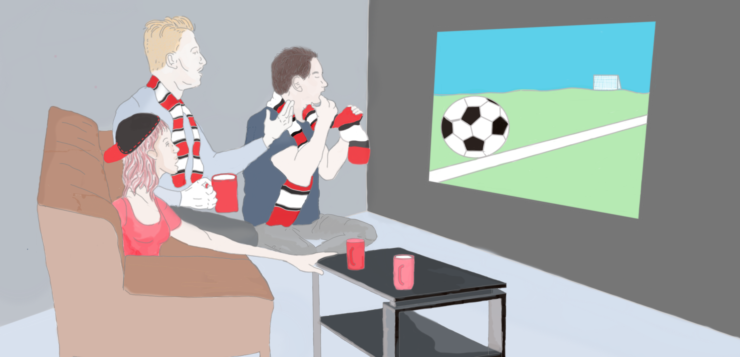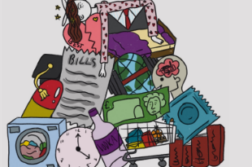This article was originally published in our Pandemic magazine, published on 28th September 2020.
No one could’ve imagined that the first debate in sport post-lockdown would be: crowd noise on or crowd noise off?
I left Fratton Park, home of Portsmouth FC, on 10th March after the mighty Fleetwood’s 2-2 draw with Pompey with a sore throat thanks to my screaming from the stands for 90 minutes. Very quickly in the days that followed, it became clear that that night would be my last time cheering my team on from the stands for the indefinite future.
At the time of writing, it is unclear whether fans will be allowed back into stadia in the autumn. With the COVID situation changing on a daily basis, the Prime Minister delayed pilots to allow fans back into sporting events, starting with Goodwood missing out on having fans in the major event in the horse racing calendar on August 1st.
However, it has become clear that we are changing the way we watch sports in response to this. Whilst fans have understandably been pining to get back into their favourite stadium, teams have found ways to engage their fans during lockdown, and the aftermath of it.
As football returned to TV, there were a whole host of ways that fans could watch sport. The first tweets on social media were focused on the big debate of crowd noise: do you want to hear fake crowds (which admittedly after the first few matches, sounded almost impeccable and really, if you couldn’t see the lack of fans, it would sound no different to a regular match) or do you want the natural stadium noise (where you get to hear fights between Frank Lampard and Jurgen Klopp)? A tough decision had to be made but it was exactly that – a decision.
COVID-19 allowed people to change the way they enjoyed sport. If you like crowd noise, you can have it. If you like hearing the more authentic sounds from the pitch-side, you can have them. If you perhaps hadn’t paid for streaming services before, then several companies offered free-to-air sport, thanks to agreements with the Government. People had so many options to watch sport – many more than ever before – that the way we watch sport is changing.
There were occasions during which fans were there virtually, too. Across the world, several clubs allowed for fans to be ‘in the stadium‘ on massive screens, via Zoom. The impact this had on the players was unclear (perhaps there is more pressure when you are playing in front of 10 fans on huge screens), but it allowed clubs to ensure fans remained engaged and again, provided an experience never before seen in the sporting world.
How long does this last? That is unclear. The FA Community Shield, regularly regarded as the annual curtain-raiser for English football, was offered by the FA to the Government as a potential trial for how to make sporting events COVID-secure whilst allowing fans into stadia once again. The match was expected to have a capacity of around 20%, with 20,000 fans reportedly hopeful of filling Wembley Stadium with social distancing and other protective measures. However, after the Prime Minister’s plea to ‘squeeze the break pedal‘ on re-opening society post-COVID, this was cast into doubt and never occured.
It will be a long time before we see a full stadium again. With fears of a second wave around Europe and uncertainty still ever-present regarding the virus’ ability to resurface in the winter, many clubs across many sports will have to prepare for what could be a significant amount of time before they can fill the stands again.
These various ways of watching sport, then, are becoming more and more important. Sporting clubs and governing bodies will have to find ways to monetise watching sport again without relying on gate receipts. The cost of the pandemic is huge – we are yet to see the long-term damage that it has had to the economy and how long smaller teams can survive for in any sport – and without fans entering stadia soon, teams and organisations which rely on ticket revenue as a main source of income could find themselves as further casualties of the economic fallout of 2020. Many suggestions have been in place, with watch parties via Zoom, limited and socially distant crowds, or affordable audio and/or visual streaming software to ensure as many people can access their club’s matches in the coming months.
The seriousness of losing ticket revenue for clubs can’t be underestimated. Reports suggest that the sports industry lost $3bn from fan revenue in May alone. For the fan, there is the loss of the match-day experience, but that seems to be a distant memory given the context of the pandemic.
For now, it remains clear that we will be continuing the debate over crowd noise well into the autumn.




